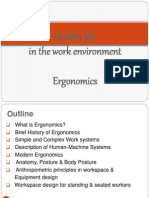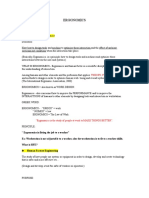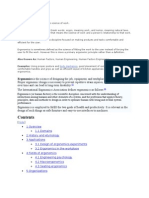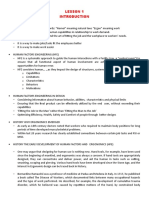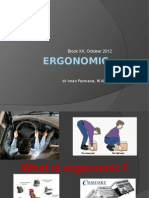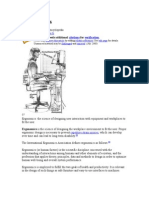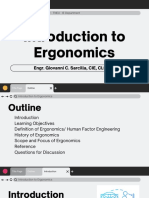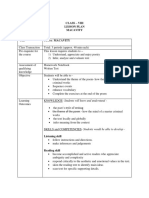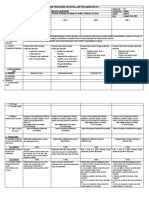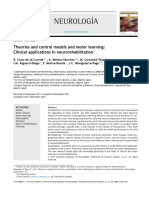0% found this document useful (0 votes)
164 views30 pagesErgonomics for Engineering Students
This document provides an introduction to ergonomics. It defines ergonomics as the scientific study of human interaction with elements of a system to optimize human well-being and system performance. The document discusses the history and development of ergonomics as a field and outlines the different domains of ergonomics including physical, cognitive, and organizational ergonomics. It also differentiates ergonomics from related fields like human factors and methods engineering and describes the focus of ergonomics on the interaction between humans and machines or equipment.
Uploaded by
NAHOM AREGACopyright
© © All Rights Reserved
We take content rights seriously. If you suspect this is your content, claim it here.
Available Formats
Download as PPT, PDF, TXT or read online on Scribd
0% found this document useful (0 votes)
164 views30 pagesErgonomics for Engineering Students
This document provides an introduction to ergonomics. It defines ergonomics as the scientific study of human interaction with elements of a system to optimize human well-being and system performance. The document discusses the history and development of ergonomics as a field and outlines the different domains of ergonomics including physical, cognitive, and organizational ergonomics. It also differentiates ergonomics from related fields like human factors and methods engineering and describes the focus of ergonomics on the interaction between humans and machines or equipment.
Uploaded by
NAHOM AREGACopyright
© © All Rights Reserved
We take content rights seriously. If you suspect this is your content, claim it here.
Available Formats
Download as PPT, PDF, TXT or read online on Scribd
/ 30











